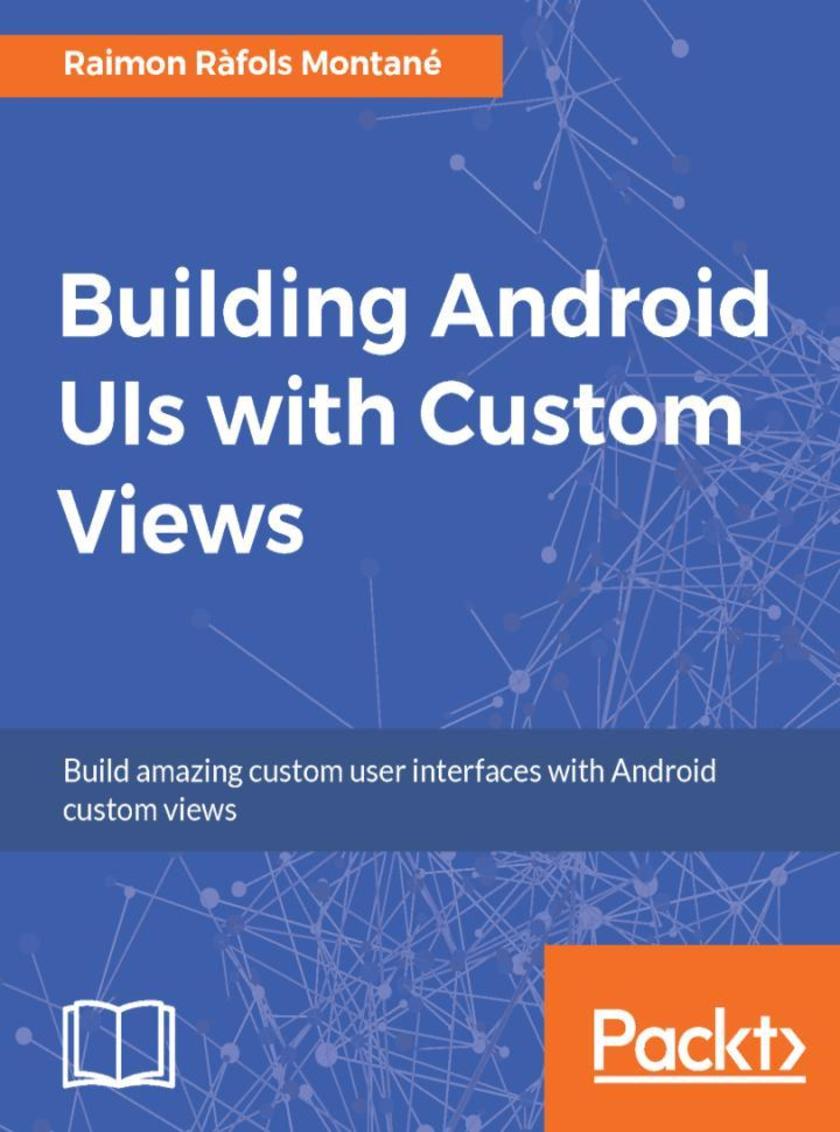
Building Android UIs with Custom Views
¥80.65
Create engaging user experiences and awesome user interfaces using this guide About This Book ? Move beyond default UI templates, create and customize amazing UIs with Android Custom View ? Enable smooth data flow and create futuristic UIs by creating flexible custom views ? Scale your apps with responsive and data intensive views Who This Book Is For This book is for Android developers who want to create great user interfaces and move beyond the basics of the standard UI elements. They must have basic Android development knowledge along with basic Java programming. What You Will Learn ? Extend the standard UI widget framework by creating Custom views ? Add complex rendering, animations, and interactions to your views ? Optimize performance and decrease battery usage ? Implement custom views to share between multiple projects, or share it publicly ? Create 3D custom views using OpenGL ES In Detail To build great user interfaces for your Android apps that go beyond the standard UI elements, you need to use custom Android views. With these, you can give your app a distinctive look and ensure that it functions properly across multiple devices. This book will help you construct a great UI for your apps by teaching you how to create custom Android views. You will start by creating your first Android custom view and go through the design considerations. You will then see how the right choices will enable your custom view to perform seamlessly across multiple platforms and Android versions. You will create custom styleable attributes that work with Android XML layouts, learn to process touch events, define custom attributes, and add properties and events to them. By the end of this book, you will be able to create apps with custom views that are responsive and adaptable to make your app distinctive and an instant hit with its users. Style and approach The approach will be that of a step by step practical tutorial. The book will take you through a complete journey, right from creating your first Android view to customizing it to enable it to support any complex app.
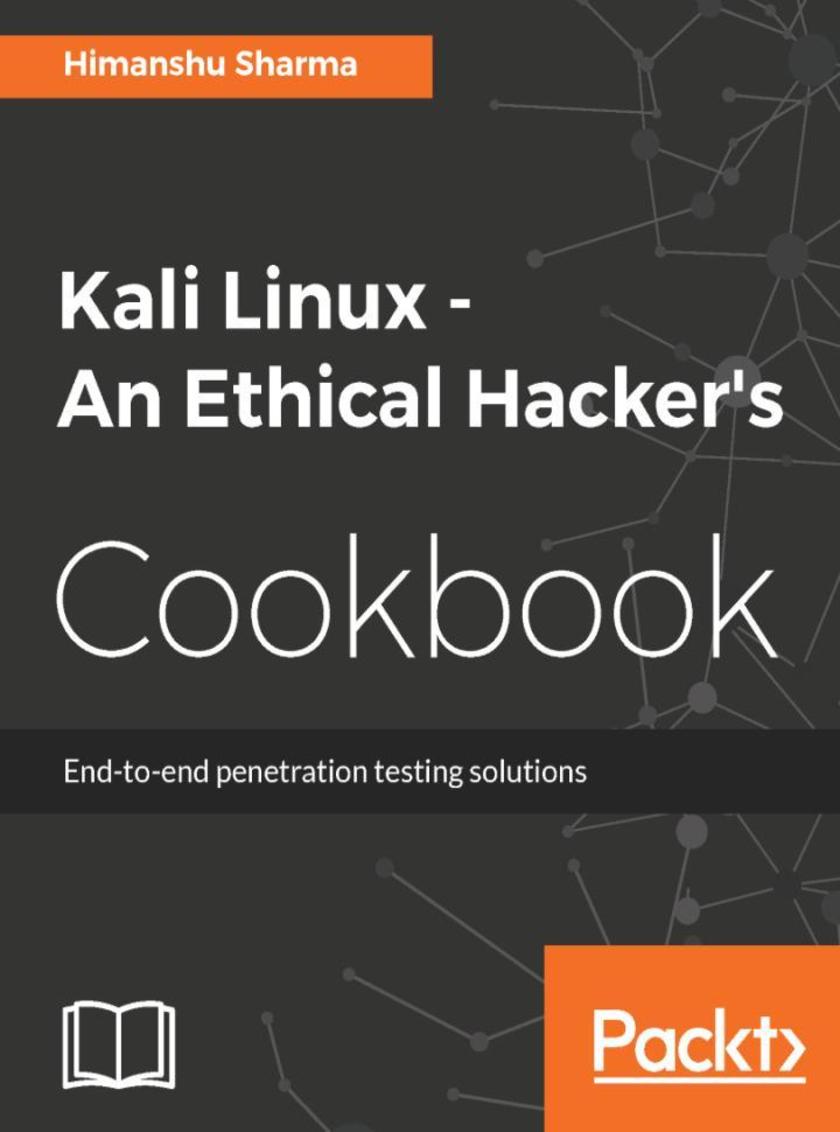
Kali Linux - An Ethical Hacker's Cookbook
¥80.65
Over 120 recipes to perform advanced penetration testing with Kali Linux About This Book ? Practical recipes to conduct effective penetration testing using the powerful Kali Linux ? Leverage tools like Metasploit, Wireshark, Nmap, and many more to detect vulnerabilities with ease ? Confidently perform networking and application attacks using task-oriented recipes Who This Book Is For This book is aimed at IT security professionals, pentesters, and security analysts who have basic knowledge of Kali Linux and want to conduct advanced penetration testing techniques. What You Will Learn ? Installing, setting up and customizing Kali for pentesting on multiple platforms ? Pentesting routers and embedded devices ? Bug hunting 2017 ? Pwning and escalating through corporate network ? Buffer over?ows 101 ? Auditing wireless networks ? Fiddling around with software-defned radio ? Hacking on the run with NetHunter ? Writing good quality reports In Detail With the current rate of hacking, it is very important to pentest your environment in order to ensure advanced-level security. This book is packed with practical recipes that will quickly get you started with Kali Linux (version 2016.2) according to your needs, and move on to core functionalities. This book will start with the installation and configuration of Kali Linux so that you can perform your tests. You will learn how to plan attack strategies and perform web application exploitation using tools such as Burp, and Jexboss. You will also learn how to perform network exploitation using Metasploit, Sparta, and Wireshark. Next, you will perform wireless and password attacks using tools such as Patator, John the Ripper, and airo*-ng. Lastly, you will learn how to create an optimum quality pentest report! By the end of this book, you will know how to conduct advanced penetration testing thanks to the book’s crisp and task-oriented recipes. Style and approach This is a recipe-based book that allows you to venture into some of the most cutting-edge practices and techniques to perform penetration testing with Kali Linux.
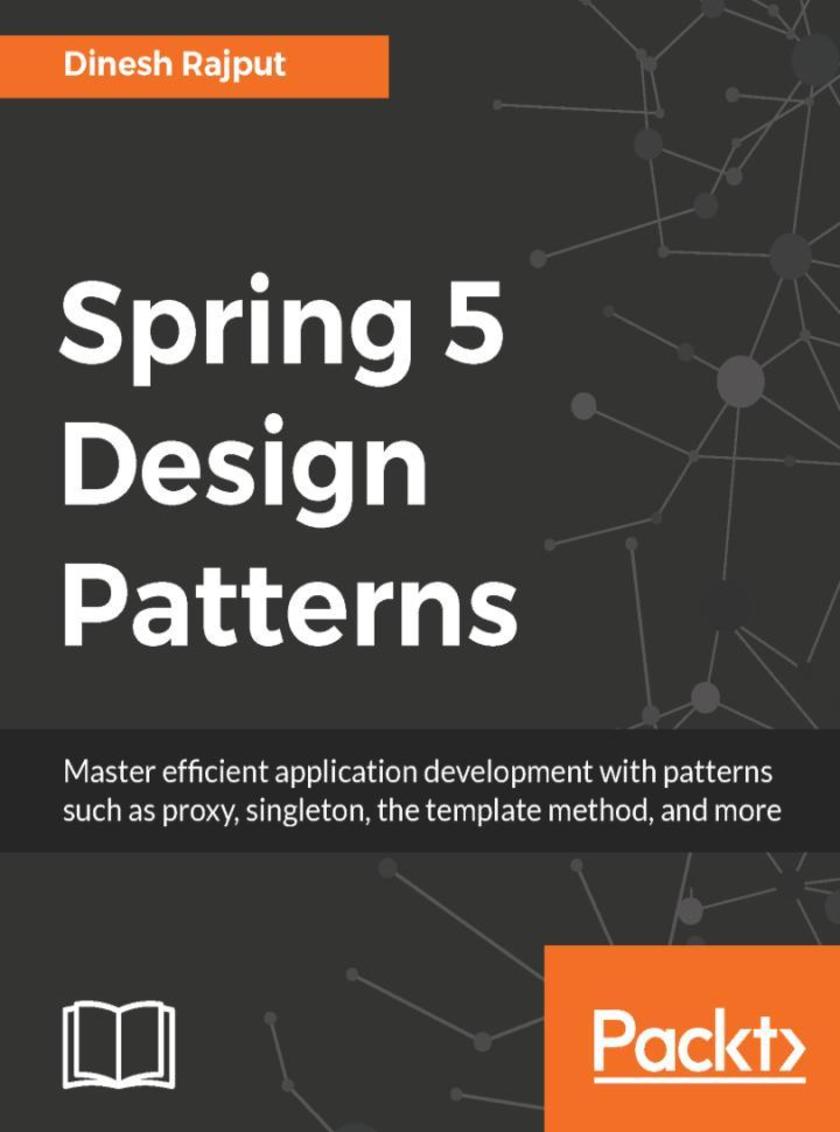
Spring 5 Design Patterns
¥80.65
Learn various design patterns and best practices in Spring 5 and use them to solve common design problems. About This Book ? Explore best practices for designing an application ? Manage your code easily with Spring's Dependency Injection pattern ? Understand the benefits that the right design patterns can offer your toolkit Who This Book Is For This book is for developers who would like to use design patterns to address common problems while designing an app using the Spring Framework and Reactive Programming approach. A basic knowledge of the Spring Framework and Java is assumed. What You Will Learn ? Develop applications using dependency injection patterns ? Learn best practices to design enterprise applications ? Explore Aspect-Oriented Programming relating to transactions, security, and caching. ? Build web applications using traditional Spring MVC patterns ? Learn to configure Spring using XML, annotations, and Java. ? Implement caching to improve application performance. ? Understand concurrency and handle multiple connections inside a web server. ? Utilizing Reactive Programming Pattern to build Reactive web applications. In Detail Design patterns help speed up the development process by offering well tested and proven solutions to common problems. These patterns coupled with the Spring framework offer tremendous improvements in the development process. The book begins with an overview of Spring Framework 5.0 and design patterns. You will understand the Dependency Injection pattern, which is the main principle behind the decoupling process that Spring performs, thus making it easier to manage your code. You will learn how GoF patterns can be used in Application Design. You will then learn to use Proxy patterns in Aspect Oriented Programming and remoting. Moving on, you will understand the JDBC template patterns and their use in abstracting database access. Then, you will be introduced to MVC patterns to build Reactive web applications. Finally, you will move on to more advanced topics such as Reactive streams and Concurrency. At the end of this book, you will be well equipped to develop efficient enterprise applications using Spring 5 with common design patterns Style and approach The book takes a pragmatic approach, showing various design patterns and best-practice considerations, including the Reactive programming approach with the Spring 5 Framework and ways to solve common development and design problems for enterprise applications.
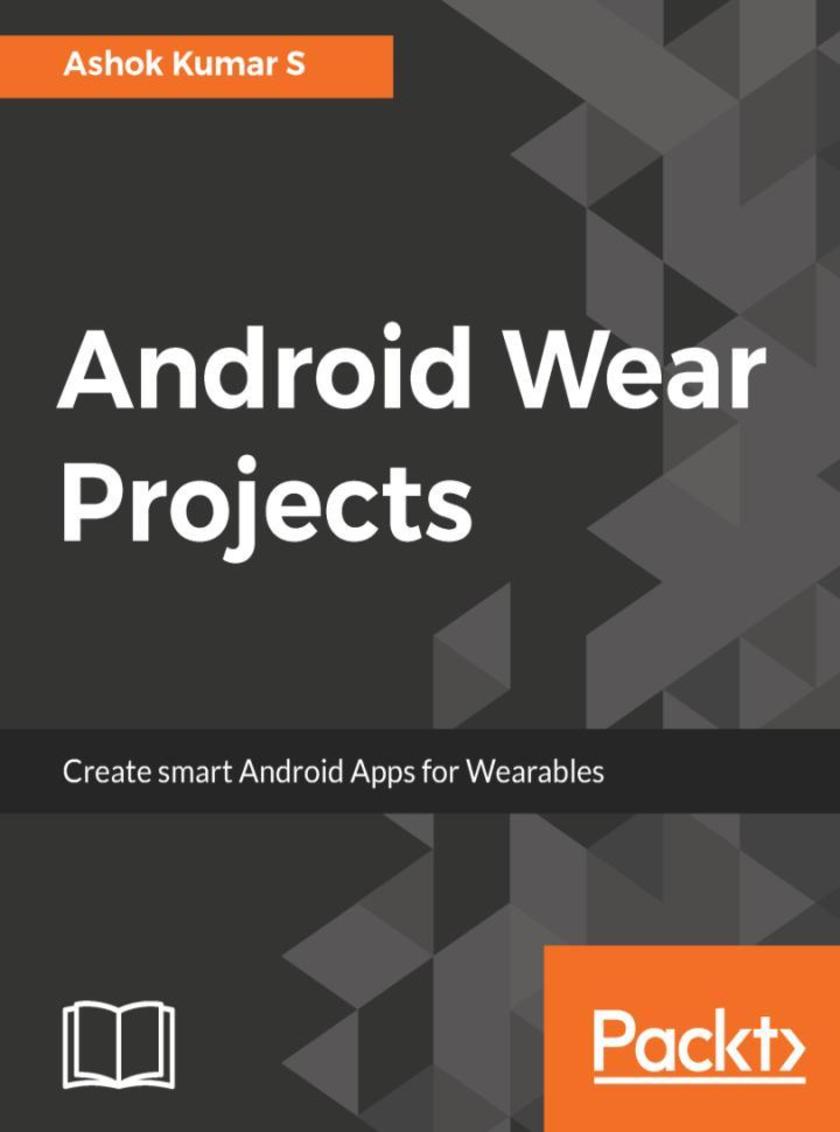
Android Wear Projects
¥80.65
A fun way to create interesting and cool apps for your Wearable device using Android programming. About This Book ? Create real-time Android Wear apps from scratch and become a pro Android Wear Developer ? Learn to create apps specially dedicated to the Android Wear platform ? Design custom Wear UIs and create interactive Watch faces Who This Book Is For The book is for Android developers with a good understanding of programming and developing applications on Android, but they need not have any experience of creating Wear apps. What You Will Learn ? Design and build Wear apps. ? Learn how to use offline storage in Wear apps. ? Understand sensors and how to work with them ? Work with standalone applications of the wear 2.0 API. ? Create a map application for Android Wear devices ? Write a watch face and understand more about Wear 2.0 ? Work with firebase realtime database and firebase functions ? Create a chatting application that has wear companion app In Detail Android Wear Projects is your opportunity to step into the exciting new world of Android Wear app development. This book will help you to master the skills in Android Wear programming and give you a complete insight on wear app development. You will create five different Android Wear apps just like the most popular Android Wear apps. You will create a To-do list, a city maps app, a Wear messenger, Wear fitness tracker and Watch face. While you create these apps you will learn to create custom notifications, receive voice inputs in notifications, add pages to notifications and stack notifications. You will see how to create custom wear app layouts, the custom UIs specially designed for Wear. You will learn to handle and manage data and syncing data with other devices, create interactive Watch faces and also ensure the safety and security of your Wear apps by testing and securing your apps before you deploy them on the app store. Style and approach This book will take a project based tutorial style approach where every chapter will create a separate android Wear app and highlight different features of android Wear apps.
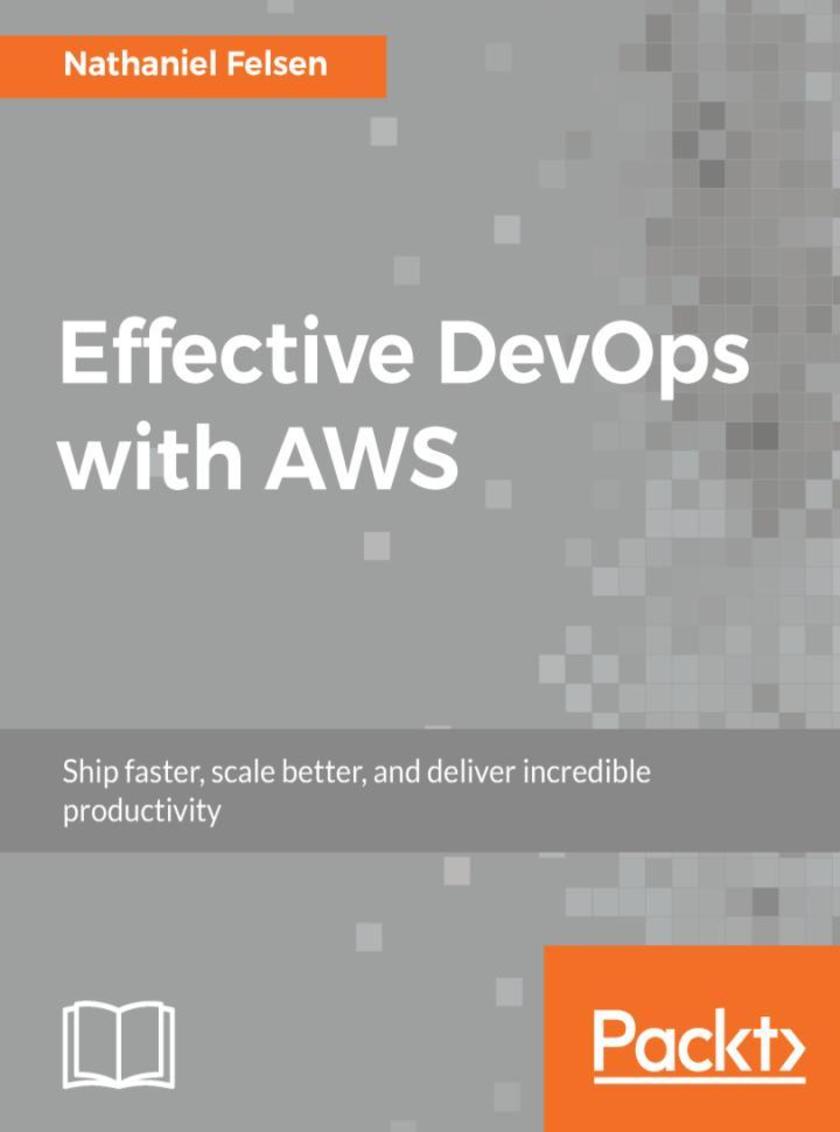
Effective DevOps with AWS
¥80.65
Scale gracefully and maintain outstanding performance with your AWS-based infrastructure using DevOps principles About This Book ? Implement DevOps principles to take full advantage of the AWS stack and services ? Take expert look at solving problems faced by real developers and operation teams and learn to overcome them ? Learn from expert insights of the author who has worked with Silicon Valley’s most high-profile companies Who This Book Is For This book is for developers, DevOps engineers and teams who want to build and use AWS for their software infrastructure. Basic computer science knowledge is required for this book. What You Will Learn ? Find out what it means to practice DevOps and what its principles are ? Build repeatable infrastructures using templates and configuration management ? Deploy multiple times a day by implementing continuous integration and continuous deployment pipelines ? Use the latest technologies, including containers and serverless computing, to scale your infrastructure ? Collect metrics and logs and implement an alerting strategy ? Make your system robust and secure In Detail The DevOps movement has transformed the way modern tech companies work. AWS which has been on the forefront of the Cloud computing revolution has also been a key contributor of this DevOps movement creating a huge range of managed services that help you implement the DevOps principles. In this book, you’ll see how the most successful tech start-ups launch and scale their services on AWS and how you can too. Written by a lead member of Mediums DevOps team, this book explains how to treat infrastructure as code, meaning you can bring resources online and offline as necessary with the code as easily as you control your software. You will also build a continuous integration and continuous deployment pipeline to keep your app up to date. You’ll find out how to scale your applications to offer maximum performance to users anywhere in the world, even when traffic spikes with the latest technologies, such as containers and serverless computing. You will also take a deep dive into monitoring and alerting to make sure your users have the best experience when using your service. Finally, you’ll get to grips with ensuring the security of your platform and data. Style and approach This is a practical, hands-on, comprehensive guide to AWS, helping readers understand AWS in a step by step manner.
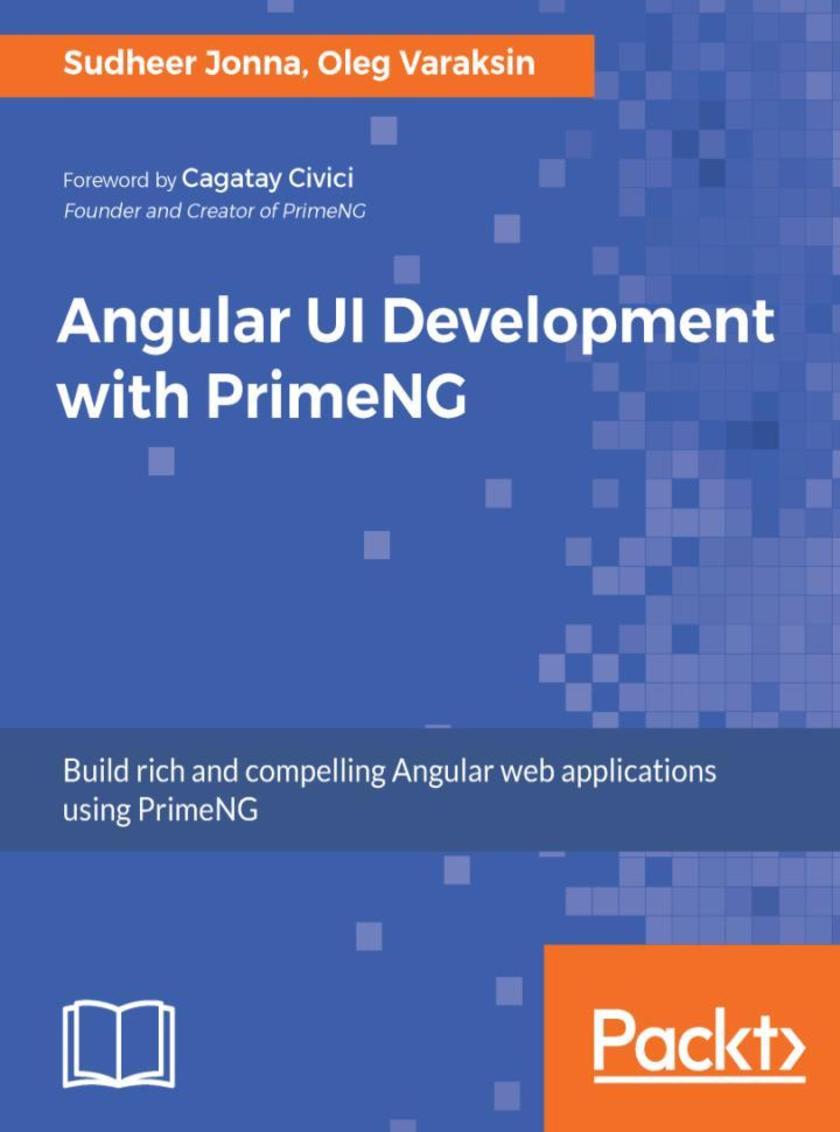
Angular UI Development with PrimeNG
¥80.65
Unleash the power of PrimeNG components to design compelling user interface for your Angular applications About This Book ? Detailed insights into PrimeNG concepts, components and features with examples to help you make excellent User Interfaces for Angular web apps. ? Get familiar with themes, layouts and customization in real world applications. ? Develop Angular applications rapidly using advance tools and standards with best practices. Who This Book Is For This book is for everybody who would like to learn or create modern Angular based single page applications using PrimeNG component library. This book is a good choice for beginners to advanced users who are serious to learn modern Angular applications. The prerequisites for this book are some basic knowledge on the Angular 2+ version with TypeScript and CSS skills. What You Will Learn ? Setup PrimeNG projects with SystemJS, Webpack, and Angular CLI. ? Use theming concepts and layouts with grid systems and Bootstrap. ? Work with enhanced input, select, button and panel components. ? Apply countless DataTable features: sorting, filtering, grouping, and templating. ? Meet data iteration components: DataList, DataGrid, Tree, and so on. ? Build endless menu variations: SlideMenu, TieredMenu, MegaMenu, and so on. ? Visualize your data representations with PrimeNG charts and GMap components. ? Adopt best practices such as state management with @ngrx/store. ? Write unit and end-to-end tests with Jasmine, Karma, and Protractor. In Detail PrimeNG is a leading UI component library for Angular applications with 80+ rich UI components. PrimeNG was a huge success in the Angular world and very quickly. It is a rapidly evolving library that is aligned with the last Angular release. In comparison with competitors, PrimeNG was created with enterprise applications in mind. This book provides a head-start to help readers develop real–world, single-page applications using the popular development stack. This book consists of 10 chapters and starts with a short introduction to single-page applications. TypeScript and Angular fundamentals are important first steps for subsequent PrimeNG topics. Later we discuss how to set up and configure a PrimeNG application in different ways as a kick-start. Once the environment is ready then it is time to learn PrimeNG development, starting from theming concepts and responsive layouts. Readers will learn enhanced input, select, button components followed by the various panels, data iteration, overlays, messages and menu components. The validation of form elements will be covered too. An extra chapter demonstrates how to create map and chart components for real-world applications. Apart from built-in UI components and their features, the readers will learn how to customize components to meet their requirements. Miscellaneous use cases are discussed in a separate chapter, including: file uploading, drag and drop, blocking page pieces during AJAX calls, CRUD sample implementations, and more. This chapter goes beyond common topics, implements a custom component, and discusses a popular state management with @ngrx/store. The final chapter describes unit and end-to-end testing. To make sure Angular and PrimeNG development are flawless, we explain full-fledged testing frameworks with systematic examples. Tips for speeding up unit testing and debugging Angular applications end this book. The book is also focused on how to avoid some common pitfalls, and shows best practices with tips and tricks for efficient Angular and PrimeNG development. At the end of this book, the readers will know the ins and outs of how to use PrimeNG in Angular applications and will be ready to create real- world Angular applications using rich PrimeNG components. Style and approach Step-by-step practical approach
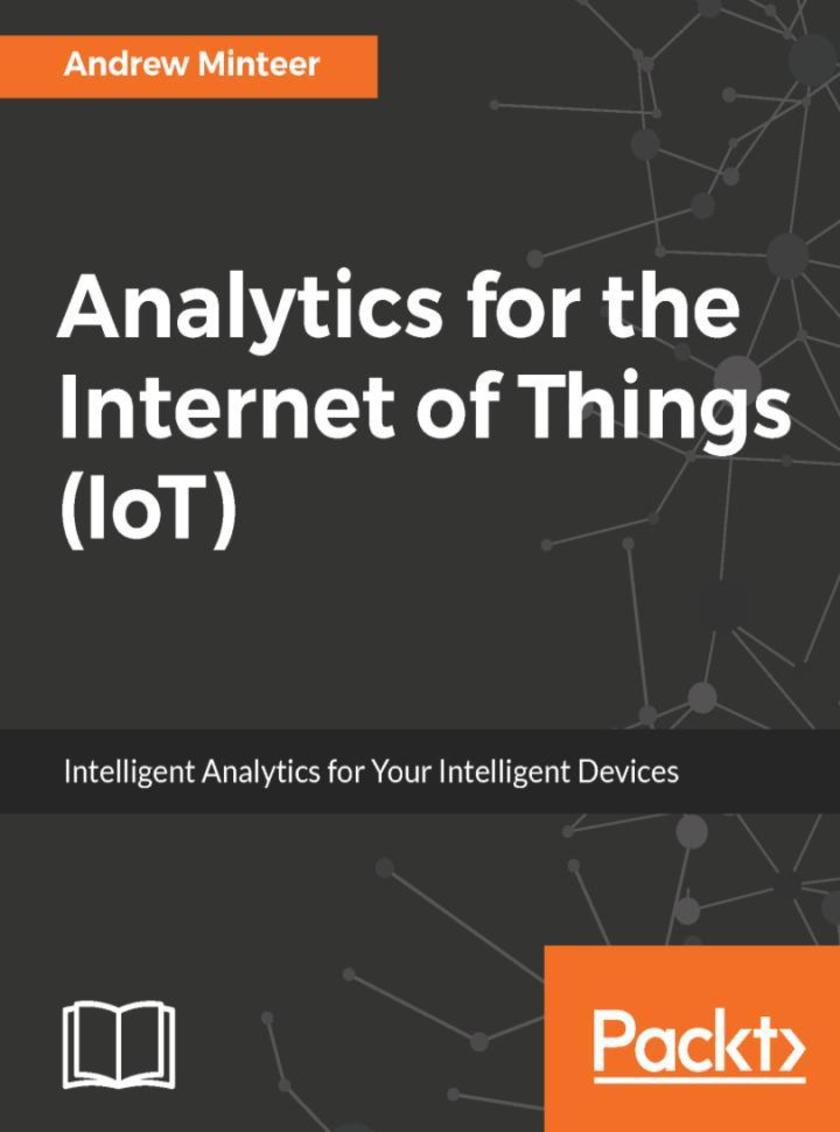
Analytics for the Internet of Things (IoT)
¥80.65
Break through the hype and learn how to extract actionable intelligence from the flood of IoT data About This Book ? Make better business decisions and acquire greater control of your IoT infrastructure ? Learn techniques to solve unique problems associated with IoT and examine and analyze data from your IoT devices ? Uncover the business potential generated by data from IoT devices and bring down business costs Who This Book Is For This book targets developers, IoT professionals, and those in the field of data science who are trying to solve business problems through IoT devices and would like to analyze IoT data. IoT enthusiasts, managers, and entrepreneurs who would like to make the most of IoT will find this equally useful. A prior knowledge of IoT would be helpful but is not necessary. Some prior programming experience would be useful What You Will Learn ? Overcome the challenges IoT data brings to analytics ? Understand the variety of transmission protocols for IoT along with their strengths and weaknesses ? Learn how data flows from the IoT device to the final data set ? Develop techniques to wring value from IoT data ? Apply geospatial analytics to IoT data ? Use machine learning as a predictive method on IoT data ? Implement best strategies to get the most from IoT analytics ? Master the economics of IoT analytics in order to optimize business value In Detail We start with the perplexing task of extracting value from huge amounts of barely intelligible data. The data takes a convoluted route just to be on the servers for analysis, but insights can emerge through visualization and statistical modeling techniques. You will learn to extract value from IoT big data using multiple analytic techniques. Next we review how IoT devices generate data and how the information travels over networks. You’ll get to know strategies to collect and store the data to optimize the potential for analytics, and strategies to handle data quality concerns. Cloud resources are a great match for IoT analytics, so Amazon Web Services, Microsoft Azure, and PTC ThingWorx are reviewed in detail next. Geospatial analytics is then introduced as a way to leverage location information. Combining IoT data with environmental data is also discussed as a way to enhance predictive capability. We’ll also review the economics of IoT analytics and you’ll discover ways to optimize business value. By the end of the book, you’ll know how to handle scale for both data storage and analytics, how Apache Spark can be leveraged to handle scalability, and how R and Python can be used for analytic modeling. Style and approach This book follows a step-by-step, practical approach to combine the power of analytics and IoT and help you get results quickly
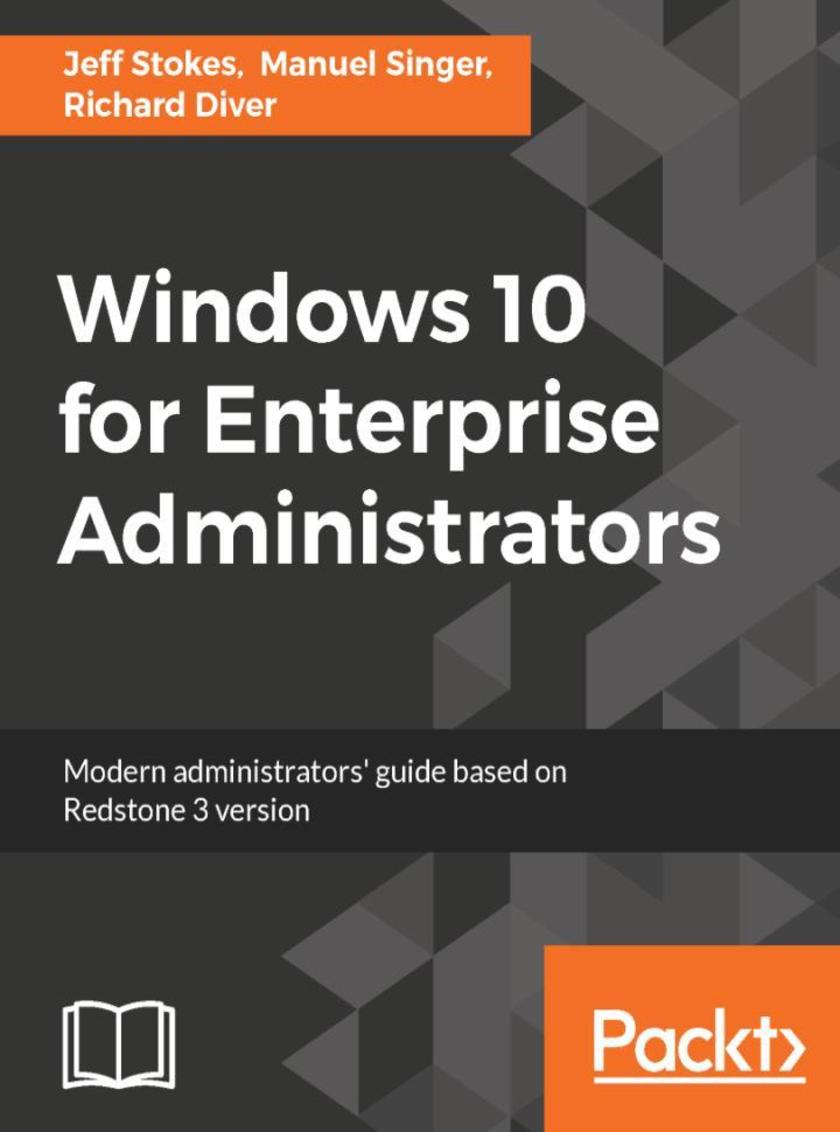
Windows 10 for Enterprise Administrators
¥80.65
Learn the art of configuring, deploying, managing and securing Windows 10 for your enterprise. About This Book ? Enhance your enterprise administration skills to manage Windows 10 Redstone 3 ? Get acquainted with configuring Azure Active Directory for enabling cloud-based services and Remote Server Admin Tools for managing Windows Server ? Provide enterprise-level security with ease using the built-in data loss prevention of Windows 10 Who This Book Is For If you are a system administrator who has been given the responsibility of administering and managing Windows 10 Redstone 3, then this book is for you. If you have deployed and managed previous versions of Windows, it would be an added advantage. What You Will Learn ? Understand the remote access capabilities ? Use third-party tools to deploy Windows 10 ? Customize image and user Interface experience ? Implement assigned access rights ? Configure remote administration ? Manage Windows 10 security ? Work with Azure AD and Intune management In Detail Microsoft’s launch of Windows 10 is a step toward satisfying the enterprise administrator’s needs for management and user experience customization. This book provides the enterprise administrator with the knowledge needed to fully utilize the advanced feature set of Windows 10 Enterprise. This practical guide shows Windows 10 from an administrator's point of view. You'll focus on areas such as installation and configuration techniques based on your enterprise requirements, various deployment scenarios and management strategies, and setting up and managing admin and other user accounts. You’ll see how to configure Remote Server Administration Tools to remotely manage Windows Server and Azure Active Directory. Lastly, you will learn modern Mobile Device Management for effective BYOD and how to enable enhanced data protection, system hardening, and enterprise-level security with the new Windows 10 in order to prevent data breaches and impede attacks. By the end of this book, you will know the key technologies and capabilities in Windows 10 and will confidently be able to manage and deploy these features in your organization. Style and approach This step-by-step guide will show you how to configure, deploy, manage, and secure the all new Windows 10 Redstone 3 for your enterprise.
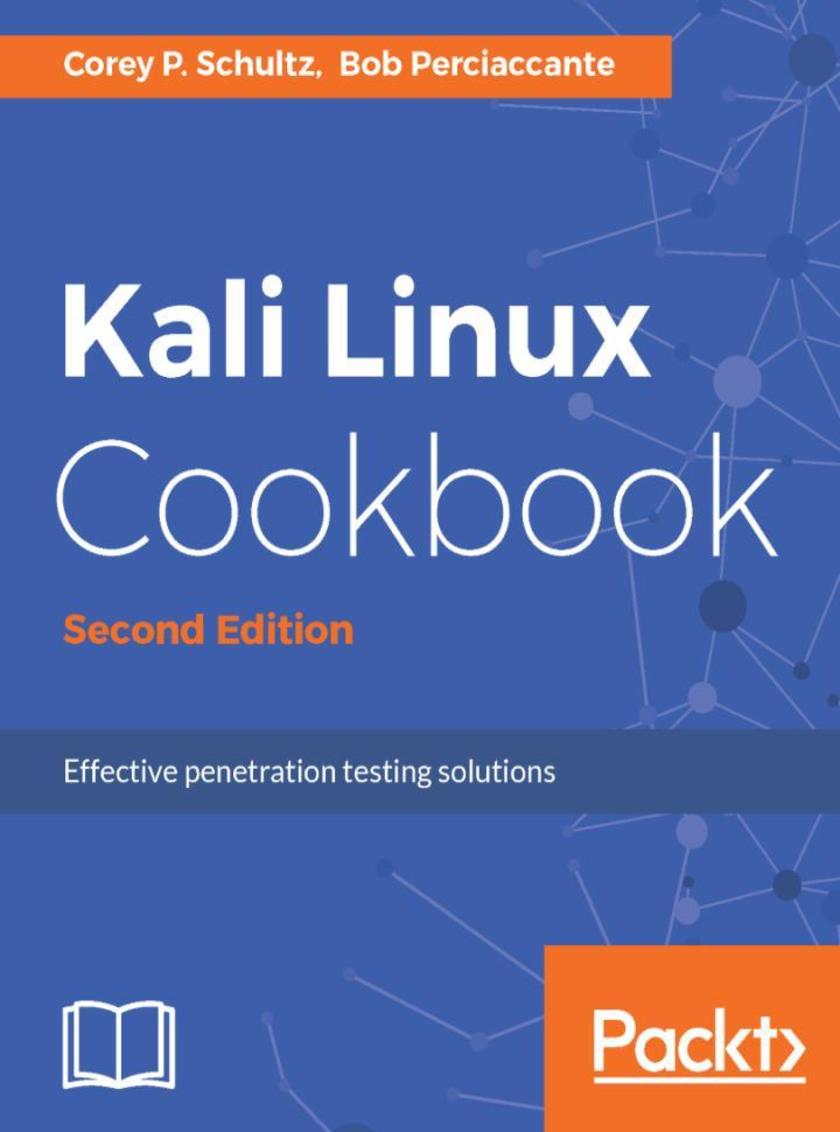
Kali Linux Cookbook - Second Edition
¥80.65
Over 80 recipes to effectively test your network and boost your career in security About This Book ? Learn how to scan networks to find vulnerable computers and servers ? Hack into devices to control them, steal their data, and make them yours ? Target wireless networks, databases, and web servers, and password cracking to make the most of Kali Linux Who This Book Is For If you are looking to expand your career into penetration testing, you will need a good understanding of Kali Linux and the variety of tools it includes. This book will work as a perfect guide for anyone who wants to have a practical approach in leveraging penetration testing mechanisms using Kali Linux What You Will Learn ? Acquire the key skills of ethical hacking to perform penetration testing ? Learn how to perform network reconnaissance ? Discover vulnerabilities in hosts ? Attack vulnerabilities to take control of workstations and servers ? Understand password cracking to bypass security ? Learn how to hack into wireless networks ? Attack web and database servers to exfiltrate data ? Obfuscate your command and control connections to avoid firewall and IPS detection In Detail Kali Linux is a Linux distribution designed for penetration testing and security auditing. It is the successor to BackTrack, the world’s most popular penetration testing distribution. Kali Linux is the most widely used platform and toolkit for penetration testing. Security is currently the hottest field in technology with a projected need for millions of security professionals. This book focuses on enhancing your knowledge in Kali Linux for security by expanding your skills with toolkits and frameworks that can increase your value as a security professional. Kali Linux Cookbook, Second Edition starts by helping you install Kali Linux on different options available. You will also be able to understand the lab architecture and install a Windows host for use in the lab. Next, you will understand the concept of vulnerability analysis and look at the different types of exploits. The book will introduce you to the concept and psychology of Social Engineering and password cracking. You will then be able to use these skills to expand the scope of any breaches you create. Finally, the book will guide you in exploiting specific technologies and gaining access to other systems in the environment. By the end of this book, you will have gained the core knowledge and concepts of the penetration testing process. Style and approach This book teaches you everything you need to know about Kali Linux from the perspective of a penetration tester. It is filled with powerful recipes and practical examples that will help you gain in-depth knowledge of Kali Linux.
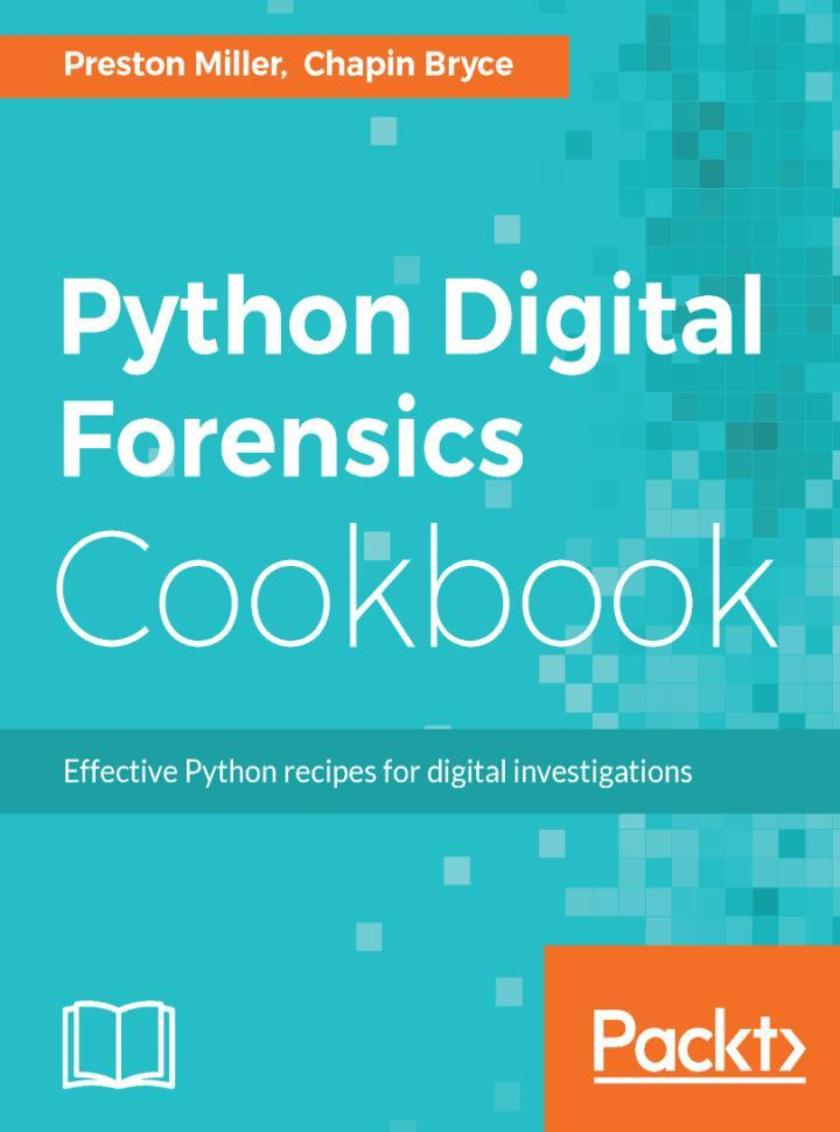
Python Digital Forensics Cookbook
¥80.65
Over 60 recipes to help you learn digital forensics and leverage Python *s to amplify your examinations About This Book ? Develop code that extracts vital information from everyday forensic acquisitions. ? Increase the quality and efficiency of your forensic analysis. ? Leverage the latest resources and capabilities available to the forensic community. Who This Book Is For If you are a digital forensics examiner, cyber security specialist, or analyst at heart, understand the basics of Python, and want to take it to the next level, this is the book for you. Along the way, you will be introduced to a number of libraries suitable for parsing forensic artifacts. Readers will be able to use and build upon the *s we develop to elevate their analysis. What You Will Learn ? Understand how Python can enhance digital forensics and investigations ? Learn to access the contents of, and process, forensic evidence containers ? Explore malware through automated static analysis ? Extract and review message contents from a variety of email formats ? Add depth and context to discovered IP addresses and domains through various Application Program Interfaces (APIs) ? Delve into mobile forensics and recover deleted messages from SQLite databases ? Index large logs into a platform to better query and visualize datasets In Detail Technology plays an increasingly large role in our daily lives and shows no sign of stopping. Now, more than ever, it is paramount that an investigator develops programming expertise to deal with increasingly large datasets. By leveraging the Python recipes explored throughout this book, we make the complex simple, quickly extracting relevant information from large datasets. You will explore, develop, and deploy Python code and libraries to provide meaningful results that can be immediately applied to your investigations. Throughout the Python Digital Forensics Cookbook, recipes include topics such as working with forensic evidence containers, parsing mobile and desktop operating system artifacts, extracting embedded metadata from documents and executables, and identifying indicators of compromise. You will also learn to integrate *s with Application Program Interfaces (APIs) such as VirusTotal and PassiveTotal, and tools such as Axiom, Cellebrite, and EnCase. By the end of the book, you will have a sound understanding of Python and how you can use it to process artifacts in your investigations. Style and approach Our succinct recipes take a no-frills approach to solving common challenges faced in investigations. The code in this book covers a wide range of artifacts and data sources. These examples will help improve the accuracy and efficiency of your analysis—no matter the situation.
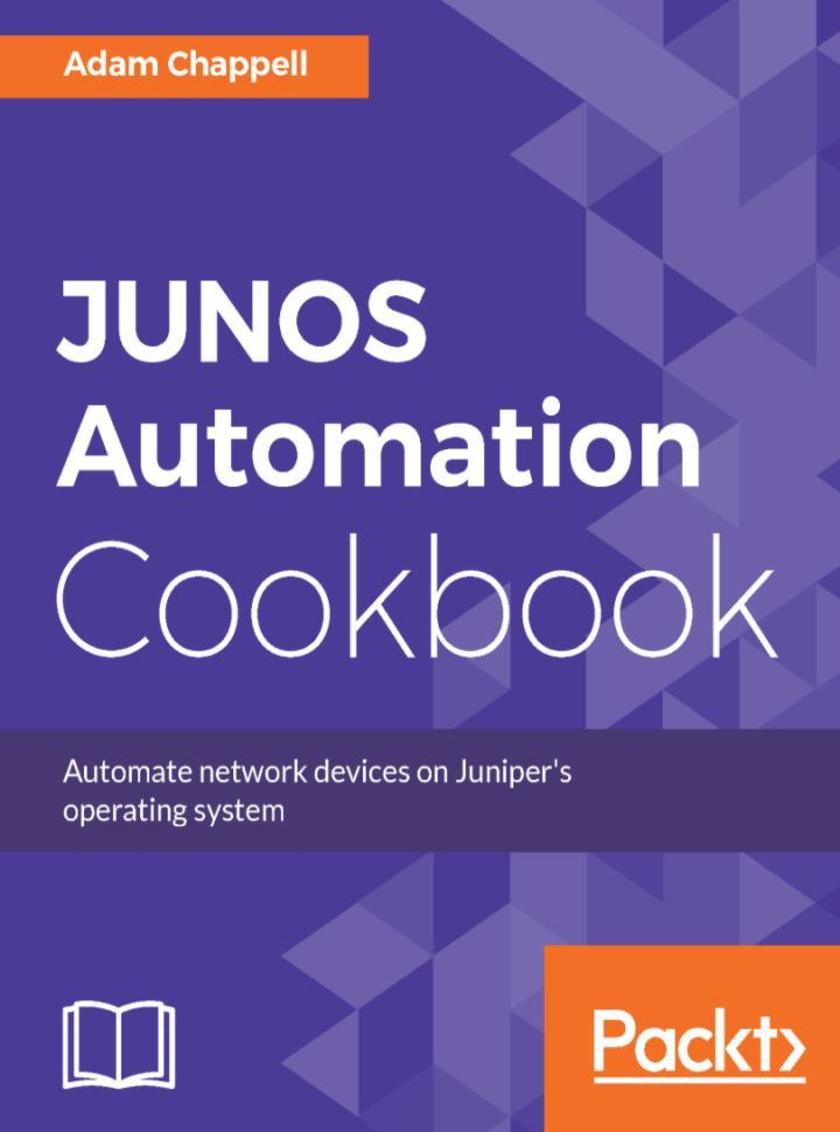
JUNOS Automation Cookbook
¥80.65
Administer, configure, and monitor Junos in your organization About This Book ? Get well acquainted with security and routing policies to identify the use of firewall filters. ? Learn to provide end-user authentication and protect each layer in an enterprise network. ? A recipe-based guide that will help you configure and monitor Junos OS and basic device operations. Who This Book Is For This book targets network engineers, developers, support personals, and administrators who are working on devices running Junos OS and are looking at automating their organisation's operations. Some understanding about Junos would be necessary What You Will Learn ? Start using NETCONF RPC standard and understand its usefulness in programming JUNOS ? Write SLAX *s to respond to events in the JUNOS environment ? Automate JUNOS with PyEZ ? Deal with events in the JUNOS environment, and writing response handlers to deal with them ? Make the most of automation technologies to help with maintenance and monitoring of JUNOS ? Use the Ansible framework to extend the automation functionality of Junos In Detail The JUNOS Automation Cookbook is a companion guide for the complex field of automating tasks on JUNOS devices. With a foundation in industry-standrd XML, JUNOS provides an ideal environment for programmatic interation, allowing you to build upon the capabilities provided by Juniper, with your own original code. You will begin by learning about, and setting up, the industry-standard NETCONF remote procedure call mechanisms on your device. After initial setup, you'll walk through SLAX - Juniper's foundation *ing language - for manipulating XML representations of JUNOS concepts and elements. You'll learn how to write your own SLAX *s to customise the operating environment, and also how to write proactive event handlers that deal with situations as they happen. You'll then delve into PyEZ - Juniper's bridging framework to make automation accessible to Python code - allowing you to build automation applications in the popular *ing language. You'll witness some examples of how to write applications that can monitor configuration changes, implement BGP security policies and implement ad-hoc routing protocols, for those really tricky situations. You'll also leaarn how asynchronous I/O frameworks like Node.js can be used to implement automation applications that present an acceptable web interface. Along with way, you'll explore how to make use of the latest RESTful APIs that JUNOS provides, how to visualize aspects of your JUNOS network, and how to integrate your automation capabilities with enterprise-wide orchestration systems like Ansible. By the end of the book, you'll be able to tackle JUNOS automation challenges with confidence and understanding, and without hassle. Style and Approach A guide that will cover all the automation tools along with steps on leveraging these tools
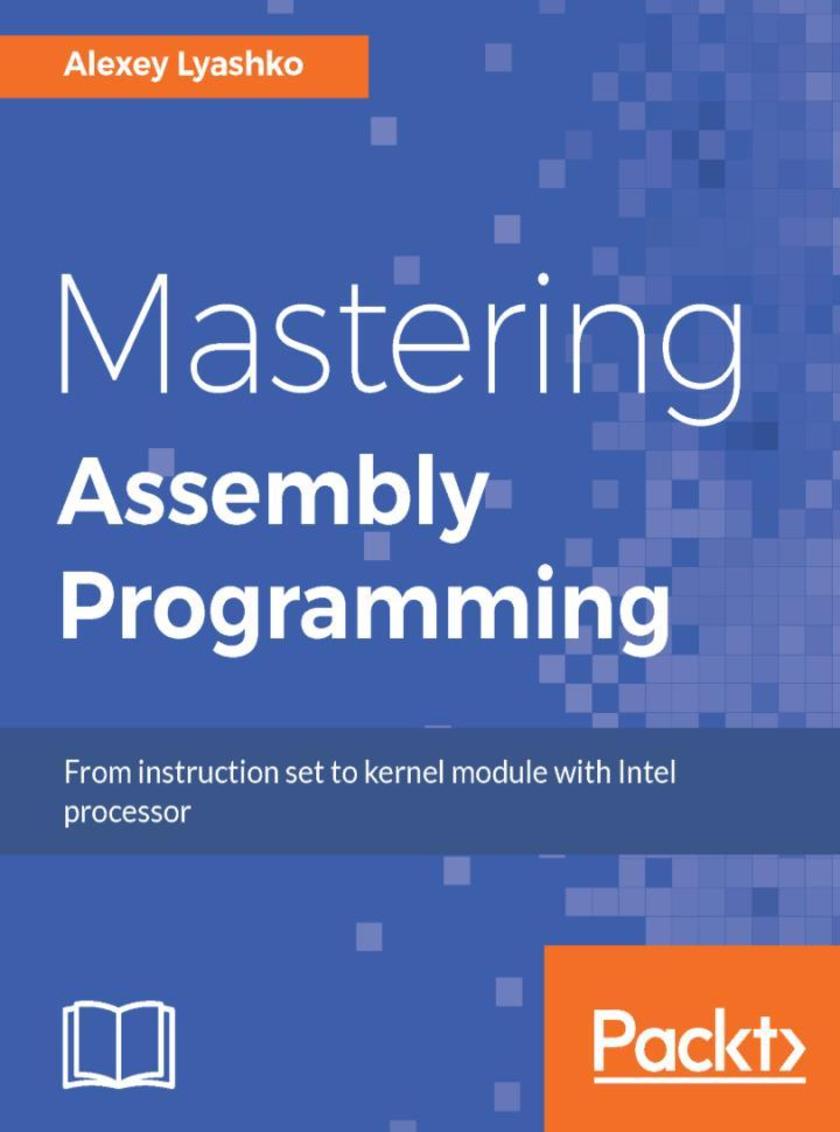
Mastering Assembly Programming
¥80.65
Incorporate the assembly language routines in your high level language applications About This Book ? Understand the Assembly programming concepts and the benefits of examining the AL codes generated from high level languages ? Learn to incorporate the assembly language routines in your high level language applications ? Understand how a CPU works when programming in high level languages Who This Book Is For This book is for developers who would like to learn about Assembly language. Prior programming knowledge of C and C++ is assumed. What You Will Learn ? Obtain deeper understanding of the underlying platform ? Understand binary arithmetic and logic operations ? Create elegant and efficient code in Assembly language ? Understand how to link Assembly code to outer world ? Obtain in-depth understanding of relevant internal mechanisms of Intel CPU ? Write stable, efficient and elegant patches for running processes In Detail The Assembly language is the lowest level human readable programming language on any platform. Knowing the way things are on the Assembly level will help developers design their code in a much more elegant and efficient way. It may be produced by compiling source code from a high-level programming language (such as C/C++) but can also be written from scratch. Assembly code can be converted to machine code using an assembler. The first section of the book starts with setting up the development environment on Windows and Linux, mentioning most common toolchains. The reader is led through the basic structure of CPU and memory, and is presented the most important Assembly instructions through examples for both Windows and Linux, 32 and 64 bits. Then the reader would understand how high level languages are translated into Assembly and then compiled into object code. Finally we will cover patching existing code, either legacy code without sources or a running code in same or remote process. Style and approach This book takes a step-by-step, detailed approach to Comprehensively learning Assembly Programming.
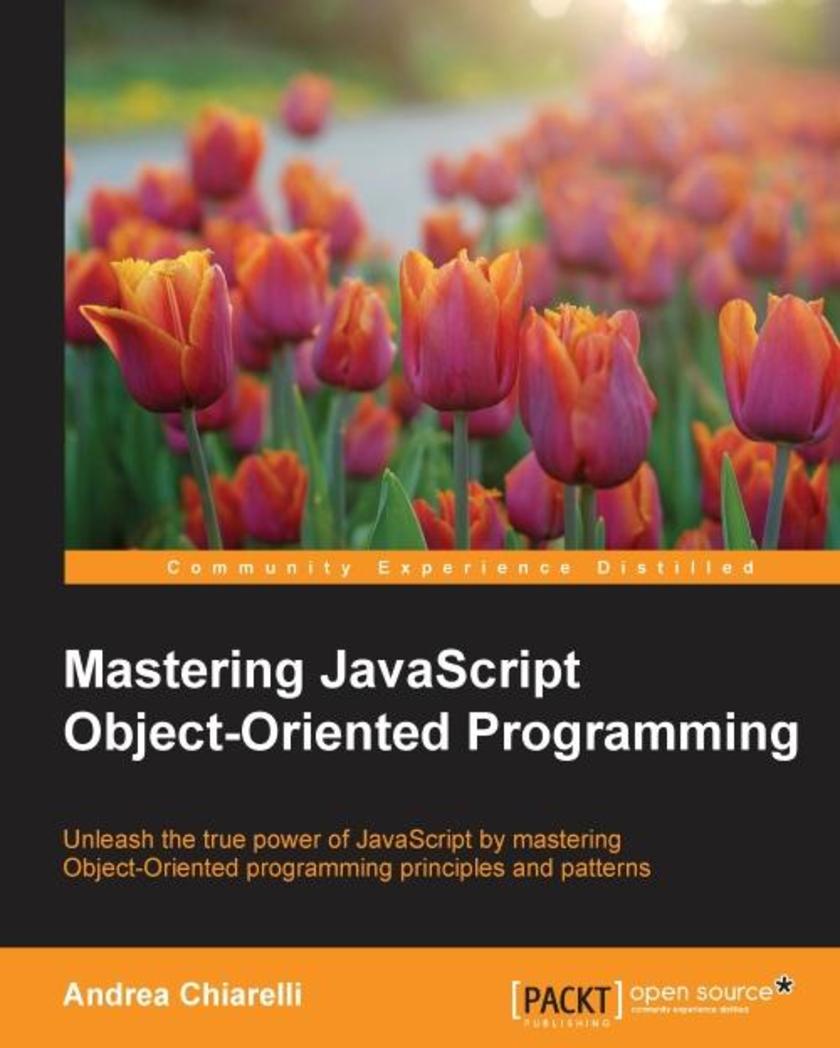
Mastering JavaScript Object-Oriented Programming
¥80.65
Unleash the true power of JavaScript by mastering Object-Oriented programming principles and patterns About This Book Covering all the new Object-Oriented features introduced in ES6, this book shows you how to build large-scale web apps Build apps that promote scalability, maintainability, and reusability Learn popular Object-Oriented programming (OOP) principles and design patterns to build robust apps Implement Object-Oriented concepts in a wide range of front-end architectures Who This Book Is For This book is ideal for you if you are a JavaScript developers who wants to gain expertise in OOP with JavaScript to improve your web development skills and build professional quality web applications. What You Will Learn Master JavaScript's OOP features, including the one's provided by ES6 specification Identify and apply the most common design patterns such as Singleton, Factory, Observer, Model-View-Controller, and Mediator Patterns Understand the SOLID principles and their benefits Use the acquired OOP knowledge to build robust and maintainable code Design applications using a modular architecture based on SOLID principles In Detail ECMAScript 6 introduces several new Object-Oriented features that drastically change the way developers structure their projects. Web developers now have some advanced OOP functionality at their disposal to build large-scale applications in JavaScript. With this book, we'll provide you with a comprehensive overview of OOP principles in JavaScript and how they can be implemented to build sophisticated web applications. Kicking off with a subtle refresher on objects, we'll show you how easy it is to define objects with the new ES6 classes. From there, we'll fly you through some essential OOP principles, forming a base for you to get hands-on with encapsulation. You'll get to work with the different methods of inheritance and we'll show you how to avoid using inheritance with Duck Typing. From there, we'll move on to some advanced patterns for object creation and you'll get a strong idea of how to use interesting patterns to present data to users and to bind data. We'll use the famous promises to work with asynchronous processes and will give you some tips on how to organize your code effectively. You'll find out how to create robust code using SOLID principles and finally, we'll show you how to clearly define the goals of your application architecture to get better, smarter, and more effective coding. This book is your one-way ticket to becoming a JavaScript Jedi who can be counted on to deliver flexible and maintainable code. Style and approach This comprehensive guide on advanced OOP principles and patterns in JavaScript is packed with real-world use cases, and shows you how to implement advanced OOP features to build sophisticated web applications that promote scalability and reusability.
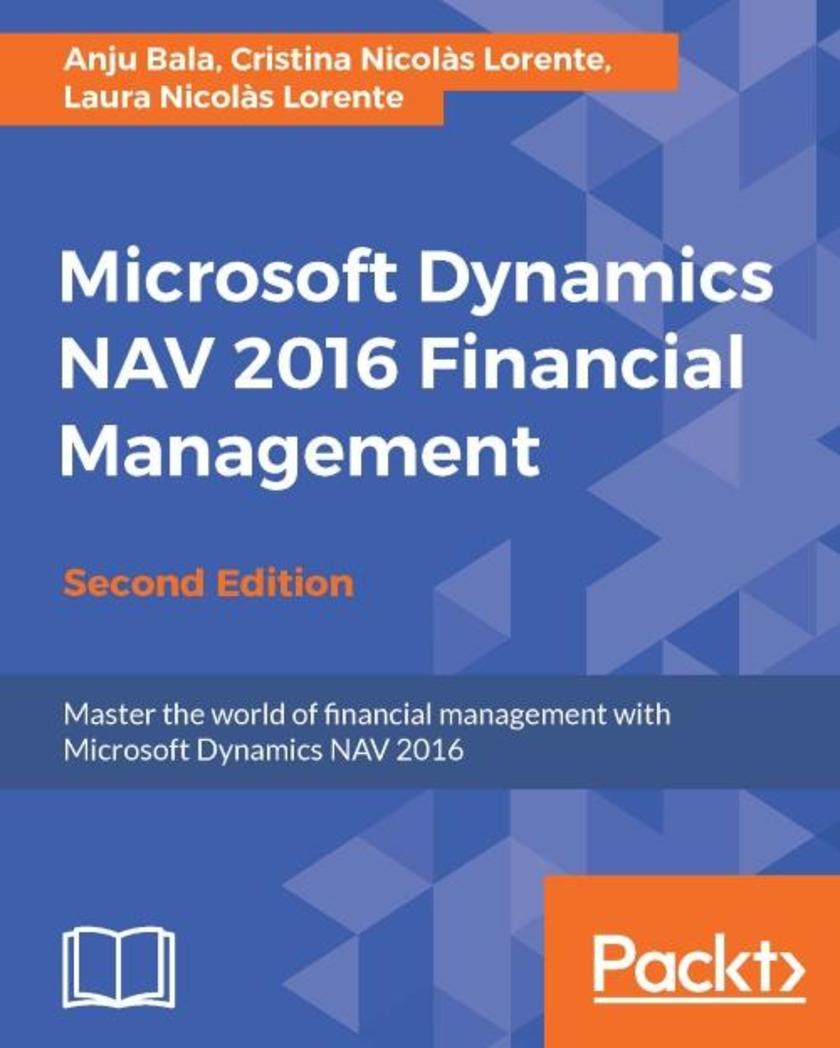
Microsoft Dynamics NAV 2016 Financial Management - Second Edition
¥80.65
Master the world of financial management with Microsoft Dynamics NAV 2016 About This Book Familiarize yourself with Dynamics NAV and get up to date with the latest release – this is an invaluable tool for financial management Learn how to use reporting tools that will help you to make the right decisions at the right time Explore features inside the sale and purchase areas as well as functionalities including payments, budgets, cash flow, fixed assets, and business intelligence Who This Book Is For This book will appeal to financers and accountants who are using Dynamics NAV as their ERP and financial management system. Dynamics NAV consultants and project managers will find it useful for their daily work. What You Will Learn Handle complete business processes for purchases and sales in Dynamics NAV. Use the banking features and the reconciliation process to gain greater insights into a company’s financial status. Report data in a meaningful way that provides the company with insightful analysis. Set up dimensions and link them with master tables and journals. Work with multi-currency and intercompany postings. Receive and send documents electronically. Manage complete Fixed Asset by Setup, transactions, budgets, and Fixed Asset Reporting. In Detail Microsoft Dynamics NAV is a global Enterprise Resource Planning (ERP) solution that provides small and mid-size businesses with greater control over their finances and a way to simplify their supply chain, manufacturing, and operations. Microsoft Dynamics NAV Financial Management explains all you need to know in order to successfully handle your daily financial management tasks. This book walks you through all the improvements in the latest release and shows you how to apply them in your workplace. You will learn about functionalities including sales and purchase processes, payments, bank account management, reporting taxes, budgets, cash flow, fixed assets, cost accounting, inventory valuation, workflows, sending and receiving electronic documents, and business intelligence. This book comprehensively covers all the financial management features inside the latest version of Dynamics NAV and follows a logical schema. By the time you’re finished this book you will have learned about budgets, cash flow management, currencies, intercompany postings, and accounting implications in areas such as jobs, services, warehousing, and manufacturing. Style and approach This book is an in-depth, practical tutorial demonstrating both the basic and more advanced concepts of financial management in Dynamics NAV.
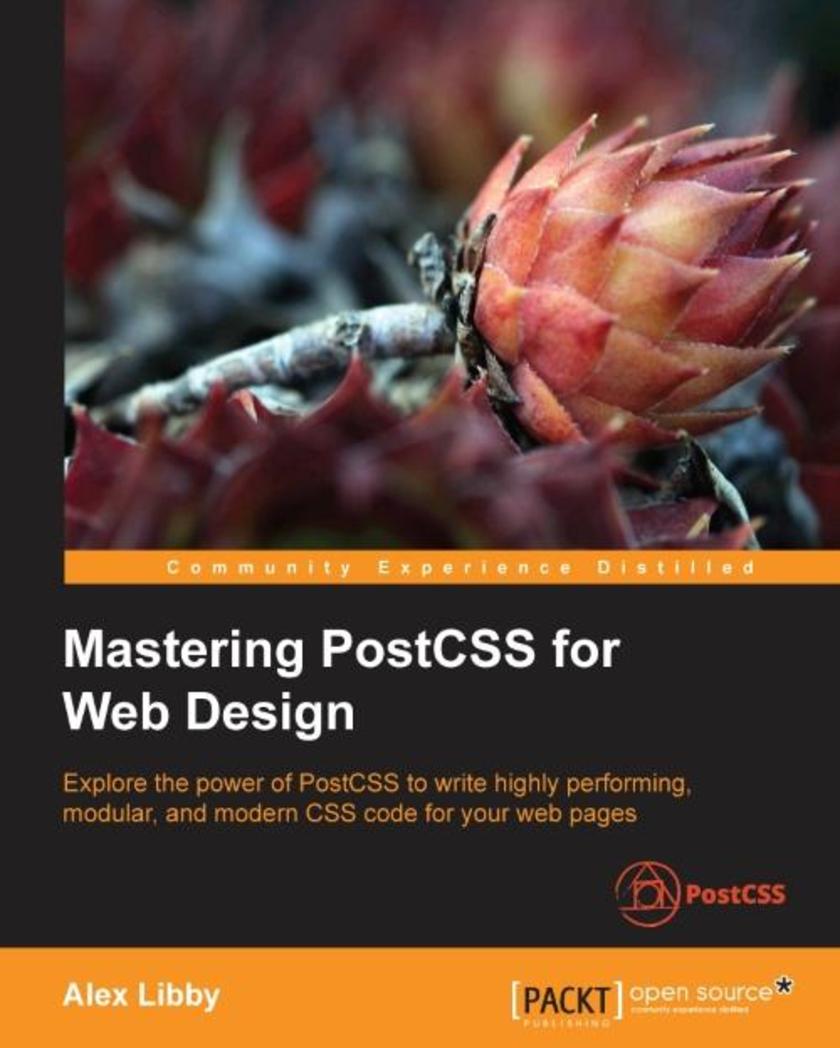
Mastering PostCSS for Web Design
¥80.65
Explore the power of PostCSS to write highly performing, modular, and modern CSS code for your web pages About This Book Incorporate cutting-edge styles in your web pages with PostCSS Simplify the process of writing CSS to a great extent using PostCSS shortcuts, fallbacks, and pack plugins This in-depth, step-by-step guide will help you master PostCSS, to create amazing and responsive web designs Who This Book Is For This book is ideal for web developers and designers who are comfortable with HTML5 and CSS and now want to master PostCSS for web design. Web designers who have been using SASS or Less and now want to adopt PostCSS would also find this book useful. What You Will Learn Add mixin and variable support to PostCSS along with conditional support Explore the different ways of nesting code such as BEM and standard nesting within PostCSS Optimize media queries built with PostCSS to get the best performance Add dynamic styling elements such as images, fonts, grids, and SVG and retina support using existing preprocessors as well as PostCSS Get familiar with using plugins, and extend PostCSS with the API Build a fully working custom preprocessor and test it on different sites such as WordPress Write a custom syntax in PostCSS while still using pre-built syntaxes such as Less, SASS, or Stylus Provide support for future CSS such as CSS4 using current CSS3 classes In Detail PostCSS is a tool that has quickly emerged as the future of existing preprocessors such as SASS and Less, mainly because of its power, speed, and ease of use. This comprehensive guide offers in-depth guidance on incorporating cutting-edge styles into your web page and at the same time maintaining the performance and maintainability of your code. The book will show how you can take advantage of PostCSS to simplify the entire process of stylesheet authoring. It covers various techniques to add dynamic and modern styling features to your web pages. As the book progresses, you will learn how to make CSS code more maintainable by taking advantage of the modular architecture of PostCSS. By the end of this book, you would have mastered the art of adding modern CSS effects to web pages by authoring high performing, maintainable stylesheets. Style and approach This comprehensive book provides in-depth guidance on how to build a PostCSS powered responsive site from scratch. Following a step-by-step approach, you will learn how to add modern styles to web pages. It also contains several tips and best practices on how you can optimize your sites by writing high performing code in PostCSS.
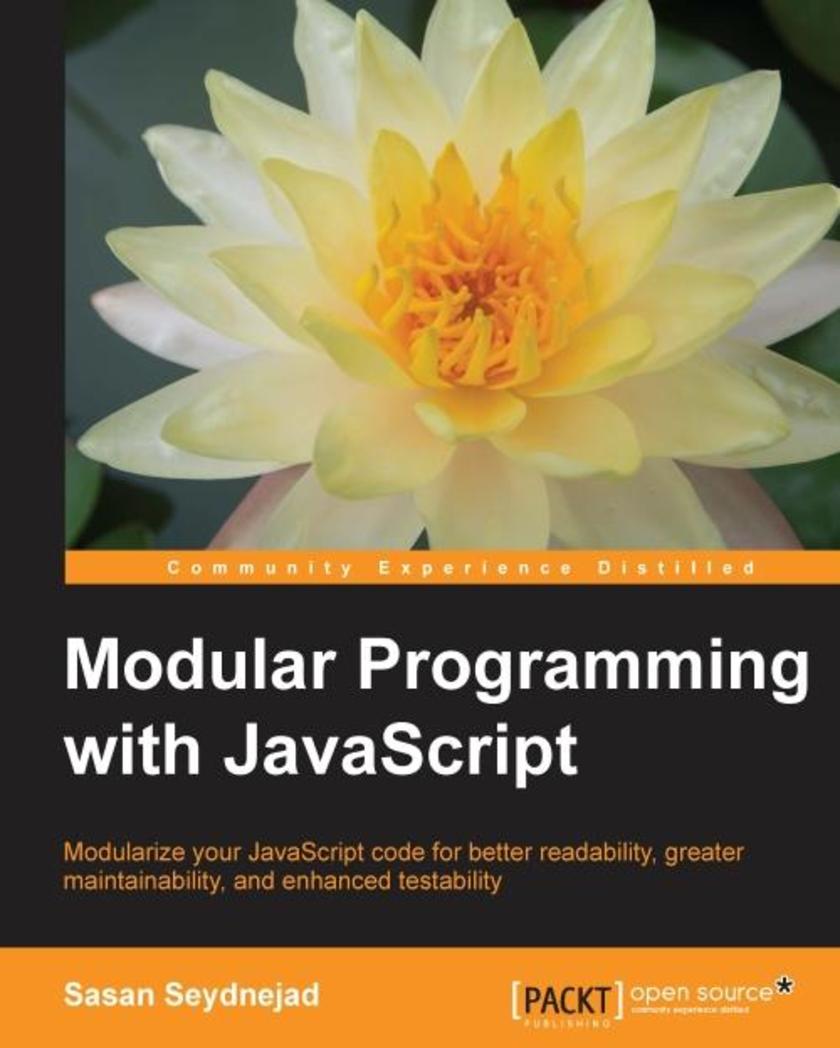
Modular Programming with JavaScript
¥80.65
Modularize your JavaScript code for better readability, greater maintainability, and enhanced testability About This Book Design and build fully modular, modern JavaScript applications using modular design concepts Improve code portability, maintainability, and integrity while creating highly scalable and responsive web applications Implement your own loosely coupled code blocks that can power highly maintainable and powerful applications in a flexible and highly responsive modular architecture Who This Book Is For If you are an intermediate to advanced JavaScript developer who has experience of writing JavaScript code but probably not in a modular, portable manner, or you are looking to develop enterprise level JavaScript applications, then this book is for you. A basic understanding of JavaScript concepts such as OOP, prototypal inheritance, and closures is expected. What You Will Learn Understand the important concepts of OOP in JavaScript, such as scope, objects, inheritance, event delegation, and more Find out how the module design pattern is used in OOP in JavaScript Design and augment modules using both tight augmentation and loose augmentation Extend the capabilities of modules by creating sub-modules using techniques such as cloning and inheritance Move from isolated module pieces to a cohesive, well integrated application modules that can interact and work together without being tightly coupled See how SandBoxing is used to create a medium for all the modules to talk to each other as well as to the core Use the concepts of modular application design to handle dependencies and load modules asynchronously Become familiar with AMD and CommonJS utilities and discover what the future of JavaScript holds for modular programming and architecture In Detail Programming in the modular manner is always encouraged for bigger systems—it is easier to achieve scalability with modular programming. Even JavaScript developers are now interested in building programs in a modular pattern. Modules help people who aren’t yet familiar with code to find what they are looking for and also makes it easier for programmers to keep things that are related close together. Designing and implementing applications in a modular manner is highly encouraged and desirable in both simple and enterprise level applications. This book covers some real-life examples of modules and how we can translate that into our world of programming and application design. After getting an overview of JavaScript object-oriented programming (OOP) concepts and their practical usage, you should be able to write your own object definitions using the module pattern. You will then learn to design and augment modules and will explore the concepts of cloning, inheritance, sub-modules, and code extensibility. You will also learn about SandBoxing, application design, and architecture based on modular design concepts. Become familiar with AMD and CommonJS utilities. By the end of the book, you will be able to build spectacular modular applications in JavaScript. Style and approach This in-depth step-by-step guide will teach you modular programming with JavaScript. Starting from the basics, it will cover advanced modular patterns that can be used in sophisticated JavaScript applications.
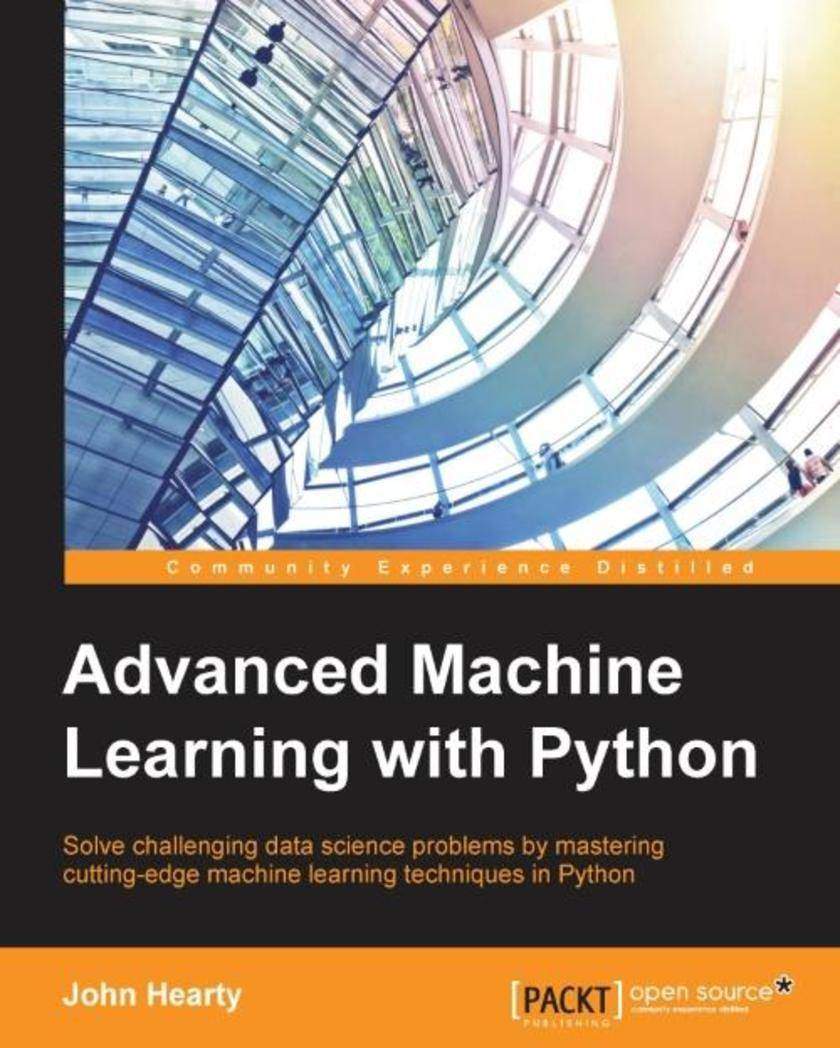
Advanced Machine Learning with Python
¥80.65
Solve challenging data science problems by mastering cutting-edge machine learning techniques in Python About This Book Resolve complex machine learning problems and explore deep learning Learn to use Python code for implementing a range of machine learning algorithms and techniques A practical tutorial that tackles real-world computing problems through a rigorous and effective approach Who This Book Is For This title is for Python developers and analysts or data scientists who are looking to add to their existing skills by accessing some of the most powerful recent trends in data science. If you’ve ever considered building your own image or text-tagging solution, or of entering a Kaggle contest for instance, this book is for you! Prior experience of Python and grounding in some of the core concepts of machine learning would be helpful. What You Will Learn Compete with top data scientists by gaining a practical and theoretical understanding of cutting-edge deep learning algorithms Apply your new found skills to solve real problems, through clearly-explained code for every technique and test Automate large sets of complex data and overcome time-consuming practical challenges Improve the accuracy of models and your existing input data using powerful feature engineering techniques Use multiple learning techniques together to improve the consistency of results Understand the hidden structure of datasets using a range of unsupervised techniques Gain insight into how the experts solve challenging data problems with an effective, iterative, and validation-focused approach Improve the effectiveness of your deep learning models further by using powerful ensembling techniques to strap multiple models together In Detail Designed to take you on a guided tour of the most relevant and powerful machine learning techniques in use today by top data scientists, this book is just what you need to push your Python algorithms to maximum potential. Clear examples and detailed code samples demonstrate deep learning techniques, semi-supervised learning, and more - all whilst working with real-world applications that include image, music, text, and financial data. The machine learning techniques covered in this book are at the forefront of commercial practice. They are applicable now for the first time in contexts such as image recognition, NLP and web search, computational creativity, and commercial/financial data modeling. Deep Learning algorithms and ensembles of models are in use by data scientists at top tech and digital companies, but the skills needed to apply them successfully, while in high demand, are still scarce. This book is designed to take the reader on a guided tour of the most relevant and powerful machine learning techniques. Clear de*ions of how techniques work and detailed code examples demonstrate deep learning techniques, semi-supervised learning and more, in real world applications. We will also learn about NumPy and Theano. By this end of this book, you will learn a set of advanced Machine Learning techniques and acquire a broad set of powerful skills in the area of feature selection & feature engineering. Style and approach This book focuses on clarifying the theory and code behind complex algorithms to make them practical, useable, and well-understood. Each topic is described with real-world applications, providing both broad contextual coverage and detailed guidance.
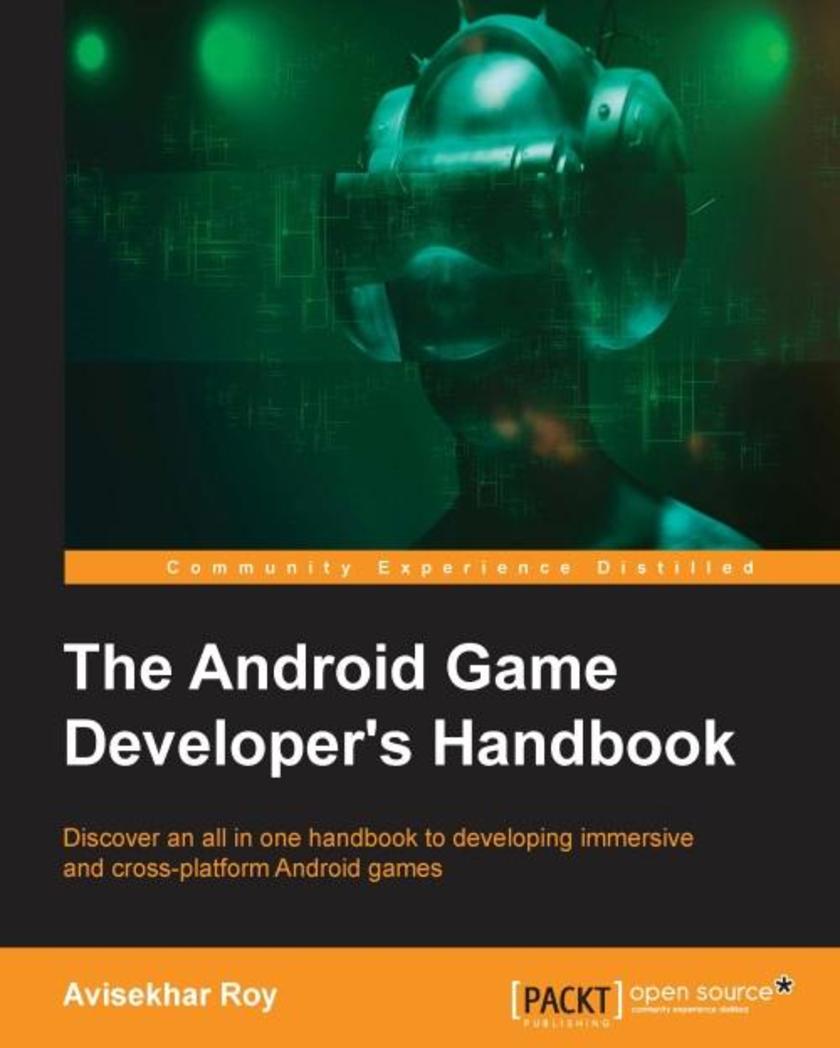
The Android Game Developer's Handbook
¥80.65
Discover an all in one handbook to developing immersive and cross-platform Android games About This Book Practical tips and tricks to develop powerful Android games Learn to successfully implement microtransactions and monitor the performance of your game once it’s out live. Integrate Google’s DIY VR tool and Google Cardboard into your games to join in on the VR revolution Who This Book Is For This book is ideal for any game developer, with prior knowledge of developing games in Android. A good understanding of game development and a basic knowledge on Android platform application development and JAVA/C++ will be appreciated. What You Will Learn Learn the prospects of Android in Game Development Understand the Android architecture and explore platform limitation and variations Explore the various approaches for Game Development using Android Learn about the common mistakes and possible solutions on Android Game Development Discover the top Cross Platform Game Engines and port games on different android platform Optimize memory and performance of your game. Familiarize yourself with different ways to earn money from Android Games In Detail Gaming in android is an already established market and growing each day. Previously games were made for specific platforms, but this is the time of cross platform gaming with social connectivity. It requires vision of polishing, design and must follow user behavior. This book would help developers to predict and create scopes of improvement according to user behavior. You will begin with the guidelines and rules of game development on the Android platform followed by a brief de*ion about the current variants of Android devices available. Next you will walk through the various tools available to develop any Android games and learn how to choose the most appropriate tools for a specific purpose. You will then learn JAVA game coding standard and style upon the Android SDK. Later, you would focus on creation, maintenance of Game Loop using Android SDK, common mistakes in game development and the solutions to avoid them to improve performance. We will deep dive into Shaders and learn how to optimize memory and performance for an Android Game before moving on to another important topic, testing and debugging Android Games followed by an overview about Virtual Reality and how to integrate them into Android games. Want to program a different wayInside you’ll also learn Android game Development using C++ and OpenGL. Finally you would walk through the required tools to polish and finalize the game and possible integration of any third party tools or SDKs in order to monetize your game when it’s one the market! Style and approach The book follows a handbook approach, focused on current and future game development trend from every possible aspect including monetization and sustainability in the market.
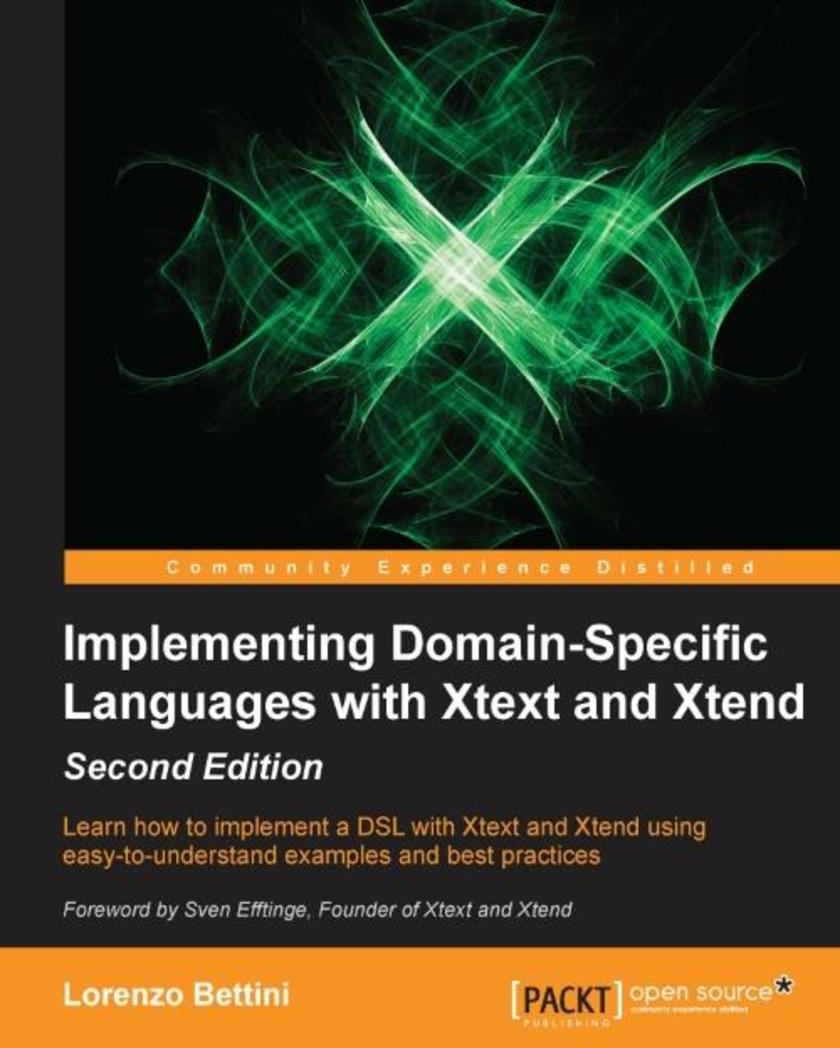
Implementing Domain-Specific Languages with Xtext and Xtend - Second Edition
¥80.65
Learn how to implement a DSL with Xtext and Xtend using easy-to-understand examples and best practices About This Book Leverage the latest features of Xtext and Xtend to develop a domain-specific language. Integrate Xtext with popular third party IDEs and get the best out of both worlds. Discover how to test a DSL implementation and how to customize runtime and IDE aspects of the DSL Who This Book Is For This book is targeted at programmers and developers who want to create a domain-specific language with Xtext. They should have a basic familiarity with Eclipse and its functionality. Previous experience with compiler implementation can be helpful but is not necessary since this book will explain all the development stages of a DSL. What You Will Learn Write Xtext grammar for a DSL; Use Xtend as an alternative to Java to write cleaner, easier-to-read, and more maintainable code; Build your Xtext DSLs easily with Maven/Tycho and Gradle; Write a code generator and an interpreter for a DSL; Explore the Xtext scoping mechanism for symbol resolution; Test most aspects of the DSL implementation with JUnit; Understand best practices in DSL implementations with Xtext and Xtend; Develop your Xtext DSLs using Continuous Integration mechanisms; Use an Xtext editor in a web application In Detail Xtext is an open source Eclipse framework for implementing domain-specific languages together with IDE functionalities. It lets you implement languages really quickly; most of all, it covers all aspects of a complete language infrastructure, including the parser, code generator, interpreter, and more. This book will enable you to implement Domain Specific Languages (DSL) efficiently, together with their IDE tooling, with Xtext and Xtend. Opening with brief coverage of Xtext features involved in DSL implementation, including integration in an IDE, the book will then introduce you to Xtend as this language will be used in all the examples throughout the book. You will then explore the typical programming development workflow with Xtext when we modify the grammar of the DSL. Further, the Xtend programming language (a fully-featured Java-like language tightly integrated with Java) will be introduced. We then explain the main concepts of Xtext, such as validation, code generation, and customizations of runtime and UI aspects. You will have learned how to test a DSL implemented in Xtext with JUnit and will progress to advanced concepts such as type checking and scoping. You will then integrate the typical Continuous Integration systems built in to Xtext DSLs and familiarize yourself with Xbase. By the end of the book, you will manually maintain the EMF model for an Xtext DSL and will see how an Xtext DSL can also be used in IntelliJ. Style and approach A step-by step-tutorial with illustrative examples that will let you master using Xtext and implementing DSLs with its custom language, Xtend.
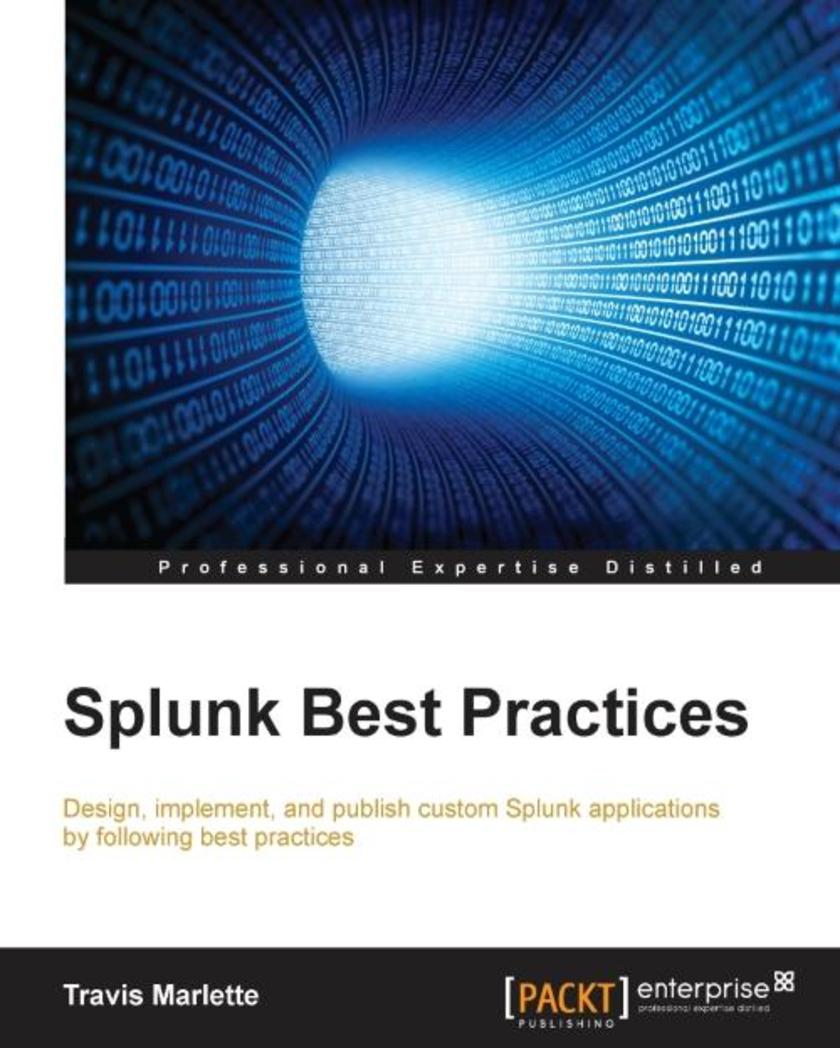
Splunk Best Practices
¥80.65
Design, implement, and publish custom Splunk applications by following best practices About This Book This is the most up-to-date guide on the market and will help you finish your tasks faster, easier, and more efficiently. Highly practical guide that addresses common and not-so-common pain points in Splunk. Want to explore shortcuts to perform tasks more efficiently with SplunkThis is the book for you! Who This Book Is For This book is for administrators, developers, and search ninjas who have been using Splunk for some time. A comprehensive coverage makes this book great for Splunk veterans and newbies alike. What You Will Learn Use Splunk effectively to gather, analyze, and report on operational data throughout your environment Expedite your reporting, and be empowered to present data in a meaningful way Create robust searches, reports, and charts using Splunk Modularize your programs for better reusability. Build your own Splunk apps and learn why they are important Learn how to integrate with enterprise systems Summarize data for longer term trending, reporting, and analysis In Detail This book will give you an edge over others through insights that will help you in day-to-day instances. When you're working with data from various sources in Splunk and performing analysis on this data, it can be a bit tricky. With this book, you will learn the best practices of working with Splunk. You'll learn about tools and techniques that will ease your life with Splunk, and will ultimately save you time. In some cases, it will adjust your thinking of what Splunk is, and what it can and cannot do. To start with, you'll get to know the best practices to get data into Splunk, analyze data, and package apps for distribution. Next, you'll discover the best practices in logging, operations, knowledge management, searching, and reporting. To finish off, we will teach you how to troubleshoot Splunk searches, as well as deployment, testing, and development with Splunk. Style and approach If you're stuck or want to find a better way to work with Splunk environment, this book will come handy. This easy-to-follow, insightful book contains step-by-step instructions and examples and scenarios that you will connect to.

Teaching with Google Classroom
¥80.65
Put Google Classroom to work while teaching your students and make your life easier About This Book This is the first book to guide educators step by step through teaching with Google Classroom It’s focused on you, your students, and providing great learning experiences easily It’s easy to follow, with everything you need to get started and keep going even if you’re not a technology fan Who This Book Is For This is a book for educators who want to use Google Classroom to teach better. It’s not for geeks. There are rich examples, clear instructions, and enlightening explanations to help you put this platform to work. What You Will Learn Create a Google Classroom and add customized information for each individual class Add students to a Google Classroom Send announcements and questions to students Create, distribute, collect, and grade assignments through Google Classroom Add events to and share a Google Classroom’s calendar with parents to track a student's progress Reuse posts, archive classrooms, and perform other administrative tasks in Google Classroom Use Google Docs Add-ons, and Google Chrome Webstore Apps and Extensions to enhance assignments Set up Google Classroom’s mobile app In Detail Google Classroom helps teachers bring their work online. According to Google Trends, it’s already bigger than Moodle after barely a year in the wild. This book is a complete start-to-finish guide for teachers using Google Classroom for the first time. It explains what Google Classroom is, what it can do, how to set it up, and how to use it to enhance student learning while making your life as a teacher easier. It shows you how to place resources and activities online, gather assignments, and develop group and individual activities. It’s not just a manual, you’ll also discover inspiring, easy ways to put Google Classroom to work for you and your class. Style and approach This is a step-by-step guide to using Google Classroom, the rapidly emerging platform for education, effectively.




 购物车
购物车 个人中心
个人中心



